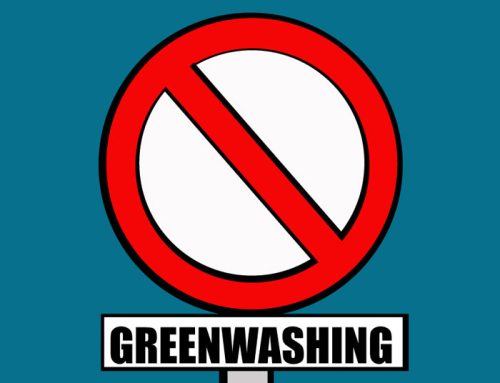Singapur: the future of water?
03/07/2018
Tiempo de lectura: 7 minutos
Can you imagine a city that aims to improve your quality of life, your economic growth, the protection of the environment while also keeping the conservation of water in mind? Most would describe this city as a Utopia and in some ways, the small island city state of Singapore is doing just that. An island that has depended on their neighboring country for too long is finally fed up with relying on others and has decided to begin to stray away from the leverage they once received from them.
The only problem? Water
Being an island, Singapore has no source of freshwater, they have always depended on their neighboring country, Malaysia, for water. But when Singapore received threats of their water supply being cut off in 1998, their first Prime Minister, Lee Kuan Yew, created a mission to become completely self sufficient for water by 2060. Although Lee Kuan Yew passed away in March 2015, he left behind a legacy that is still being carried on and replicated by others to this day. “The Four National Taps” is what the island calls it, four different ways of obtaining water: water from local catchments, imported water, NEWater and desalinated water.
Local Catchments
The local water catchments in Singapore collects rainfall and guides it into one of their 17 reservoirs. These catchments cover roughly two thirds of the islands land surface area and by 2060 they hope to maximum this surface area in order to aim to catch every drop of water that falls onto their land. Singapore has high expectations for conserving water but for a city that has a water demand of 430 million gallons of water per day, these expectations are necessary, especially when the demand is expected to double by 2060. Singapore has not relied on this method alone, help from their neighbors has been a complicated but helpful assistance with their water crisis.
Imported Water
Malaysia has been generous with their water supply since their first water agreement was signed with Singapore in 1927. When that agreement expired, the 1961 agreement was created but that expired in 2011 as well. Now, the island depends on two documents for reliance on imported water, the 1962 agreement and 1990 agreement. The 1962 agreement allowed Singapore to withdraw 250 millions of gallons of water per day from Malaysia and the 1990 agreement allowed Singapore to build a dam to hold that same water. Both the agreements expire in 2061 and with threats from Malaysia of them cutting off the water supply, the island plans to cut off water ties with Malaysia by 2060. They have 42 years to obtain water sustainability independently and although that does not seem like very long, they have been able to create new methods to satisfy their growing water demand.
NEWater
NEWater has been the system in place that has caused people to squirm in their seats. The people of Singapore have developed a method that allows them to make their sewage water drinkable. To most, the idea seems absurd and simply disgusting but the water goes through multiple processes that rids it of any bacteria and has passed numerous tests that prove its cleanliness. There are four steps the water goes through before being released back to the public: Microfiltration, Reverse Osmosis, UV Disinfection and pH Balance. Microfiltration is the stage where the water is riding of any solids, viruses and any potential bacteria. Reverse Osmosis is where the water is cleansed of smaller bacteria that passes through the pores of the water. UV Disinfection guarantees that the water is free of any harmful substances through an ultraviolet light that goes through the water. The final step, pH Balance, is where chemicals are added into the water to make the newly cleaned water taste better after other chemicals interfere with its taste. With four stages of cleansing, the island of Singapore has accepted NEWater into their cities but even though NEWater is completely approved to be drinkable, it is mostly used for the non domestic side of things like for factories and other business uses. The NEWater is more of a backup plan in case the city ever has a problem retrieving water elsewhere, like in in October 2017 when water was suspended from Malaysia. The water from the Johor River was contaminated so the island had to distribute NEWater into households (most did not even notice). So in a crisis, the water has proven to be able to satisfy the needs of consumers and they predict that by 2060, it will be able to meet up to 55% of the islands water demand.
Desalinated Water
Desalinated water is the process of removing the salt and other minerals from water in order to make it drinkable for users. This process is hoped to meet 30% of Singapore’s water needs by 2060. They currently have three desalinated water plants and plan to build two more by 2020. The first Desalination Plant that was built in 2005 can withhold a capacity of 30 million gallons and has received nothing but positive results since. With great feedback from this first plant, the second plant was built and can withhold 70 millions gallons. The third plant is the first to use ¨advanced pretreatment technology¨. It is a more modern plant that is equipped with solar panels that cover more than half of the roof space. The current desalinated water plants in singapore have shown great quality and production and have been a model for other countries looking to desalinate water as well.
What are the citizens doing to help water conservation?
The journey to this islands water sustainability hasn´t been an easy one and the city looks to its people for help in the process. The government asks the people to be more efficient in conserving water. In 2003, Singapore’s household water intake was 165 liters per day and in 2017 that reduced to 143 liters. The Singaporean government was shocked and extremely pleased with the results and hopes to lower that household intake to 140 liters by 2060. Citizens of Singapore are learning to reduce their water needs in their household as well as choosing to buy water efficient products. Singapore has an active government who wants all citizens to be aware of their water consumption so they developed awards to give to their citizens when an individual is seen going above and beyond in water conservation, they call these the Watermark Awards. The island also takes great interest in celebrating World Water Day, that takes place on March 22 every year within the United Nations but Singapore goes above and beyond and celebrates the day throughout the entire month of March. They encourage people to be extra conservant of water throughout this month and hope to engage every citizen in the quest to full water self sufficiency by 2060. They even have a free museum where people can take a tour of the full process of obtaining NEWater, their active community involvement with water has created a city that fights for their goal as a collective rather than individually.
How are other countries looking at Singapore?
SmartCitiesWorld released a report that ranks Singapore the worlds number one smart city. With their good economic standing, active government engagement and amazing water conservation systems it seems as if this ranking was no competition for Singapore. They have received two seperate awards from the biennial Project Innovation Awards that is recognized nationally as well as receive the “Environmental Contribution of the Year” in 2008 and the “Water Agency of the Year” in 2006. Some countries, like Australia are developing a taste for NEWater and have attempted to create a replica of it after their long drought season. As other great nations begin to recognize Singapore and their strong engagement in water conservation, we hope that the shrinking freshwater supply becomes an importance to people across the globe. We must look to water as something valuable and scarce; Singapore has been able to effectively direct this message to its citizens and we now look to other countries to replicate.








